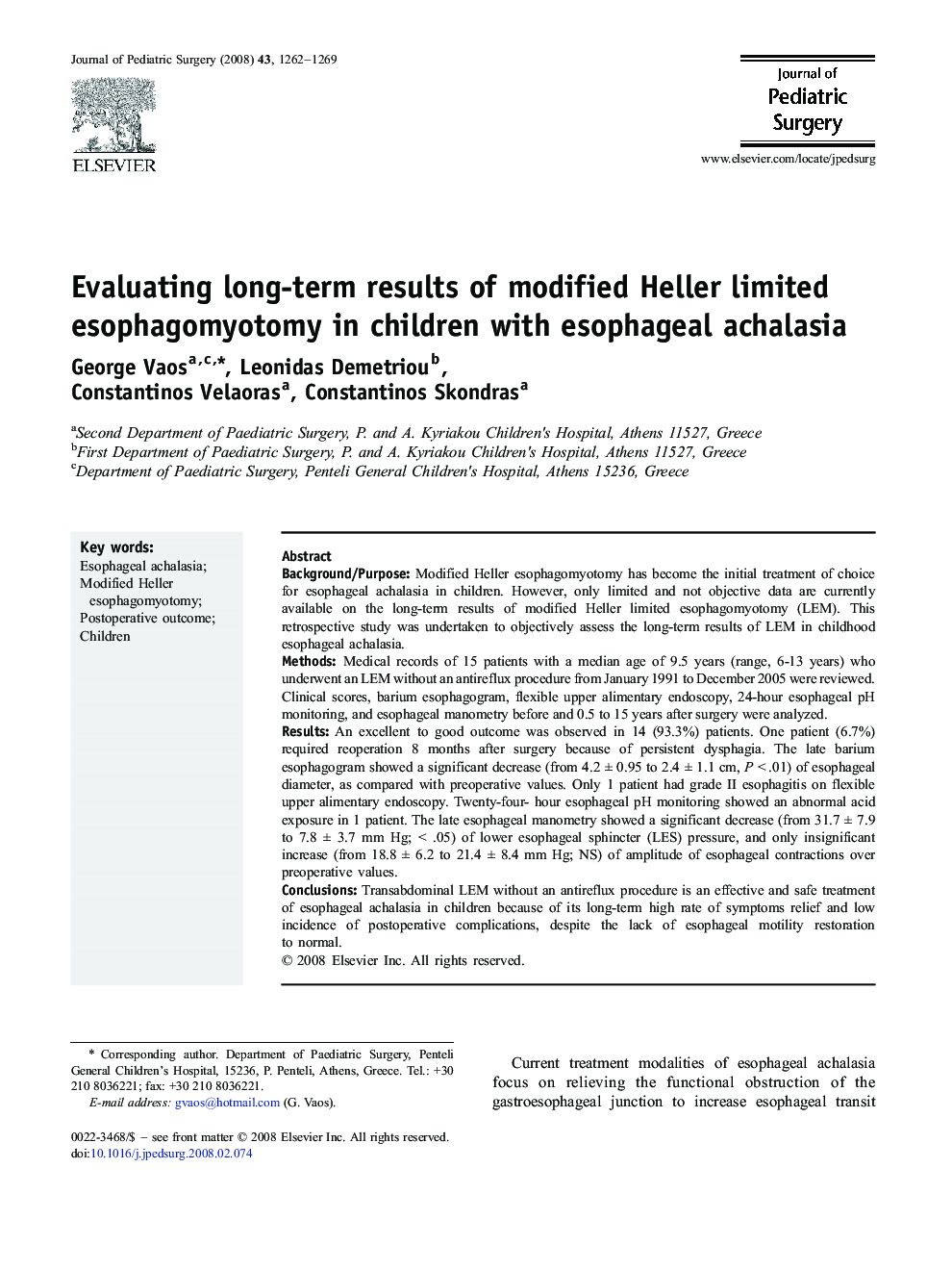| Article ID | Journal | Published Year | Pages | File Type |
|---|---|---|---|---|
| 4158870 | Journal of Pediatric Surgery | 2008 | 8 Pages |
Background/PurposeModified Heller esophagomyotomy has become the initial treatment of choice for esophageal achalasia in children. However, only limited and not objective data are currently available on the long-term results of modified Heller limited esophagomyotomy (LEM). This retrospective study was undertaken to objectively assess the long-term results of LEM in childhood esophageal achalasia.MethodsMedical records of 15 patients with a median age of 9.5 years (range, 6-13 years) who underwent an LEM without an antireflux procedure from January 1991 to December 2005 were reviewed. Clinical scores, barium esophagogram, flexible upper alimentary endoscopy, 24-hour esophageal pH monitoring, and esophageal manometry before and 0.5 to 15 years after surgery were analyzed.ResultsAn excellent to good outcome was observed in 14 (93.3%) patients. One patient (6.7%) required reoperation 8 months after surgery because of persistent dysphagia. The late barium esophagogram showed a significant decrease (from 4.2 ± 0.95 to 2.4 ± 1.1 cm, P < .01) of esophageal diameter, as compared with preoperative values. Only 1 patient had grade II esophagitis on flexible upper alimentary endoscopy. Twenty-four- hour esophageal pH monitoring showed an abnormal acid exposure in 1 patient. The late esophageal manometry showed a significant decrease (from 31.7 ± 7.9 to 7.8 ± 3.7 mm Hg; < .05) of lower esophageal sphincter (LES) pressure, and only insignificant increase (from 18.8 ± 6.2 to 21.4 ± 8.4 mm Hg; NS) of amplitude of esophageal contractions over preoperative values.ConclusionsTransabdominal LEM without an antireflux procedure is an effective and safe treatment of esophageal achalasia in children because of its long-term high rate of symptoms relief and low incidence of postoperative complications, despite the lack of esophageal motility restoration to normal.
